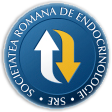
- Login
- Register
- Home/Current Issue
- About the journal
- Editorial board
- Online submission
- Instructions for authors
- Subscriptions
- Foundation Acta Endocrinologica
- Archive
- Contact
 Romanian Academy
Romanian Academy
 The Publishing House of the Romanian Academy
The Publishing House of the Romanian Academy

ACTA ENDOCRINOLOGICA (BUC)
The International Journal of Romanian Society of Endocrinology / Registered in 1938in Web of Science Master Journal List
Acta Endocrinologica(Bucharest) is live in PubMed Central
Journal Impact Factor - click here.

-
Actualities in medicine
Coculescu M, Niculescu DA
Thyroid Advanced Carcinoma, Vaccine for T1D Diabetes, Vasotocine in Mammals as NatriureticActa Endo (Buc) 2013 9(3): 499-502 doi: 10.4183/aeb.2013.499
Abstract- -
Book Review
Badiu C
Harrison's Principles of Internal Medicine 16th edActa Endo (Buc) 2005 1(4): 499-499 doi: 10.4183/aeb.2005.499
-
Actualities in medicine
Ceausu I
Gestational Diabetes Mellitus – is Still a “Mysterious Disease” in 2016Acta Endo (Buc) 2016 12(4): 500-503 doi: 10.4183/aeb.2016.500
AbstractOverview of necessity of universal screening as the tool for adequate diagnosis of GDM in 2016. Identifying of gestational diabetes mellitus (GDM) overpasses the medical discussion of utility, both for the mother and child, both for the short term and long term possible complications. -
Case Report
Serban RC, Scridon A, Petri R, Pascanu I, Dobreanu D
Atrial Electric Instability and Conduction Disorders in the Setting of Hyponatremia Induced by Combined Non-Psychogenic Polydipsia and Diuretic TherapyActa Endo (Buc) 2015 11(4): 501-506 doi: 10.4183/aeb.2015.501
AbstractContext. Non-psychogenic polydipsia-induced hyponatremia is a rare clinical finding. The effects of severe hyponatremia on the electrical activity of the heart in this setting are far from clear. Case report. Resting ECG and 24-h ambulatory ECG monitoring performed in an 80-year-old hypertensive female accusing nonspecific symptoms of confusion, lethargy, disorientation, nausea, and palpitations, demonstrated significant intraatrial and atrioventricular conduction disorders and numerous atrial tachyarrhythmia episodes. Laboratory analysis revealed severe hyponatremia (108 mEq/L) as only significant disorder. Extensive endocrine, neurological, cardiology, and pulmonary examinations excluded the most common causes of hyponatremia, including the inappropriate antidiuretic hormone secretion syndrome. Careful history revealed excessive voluntary water intake of up to 6 L/day and low sodium intake, associated with long-term thiazidelike diuretic treatment. Correction of sodium levels was associated with complete resolution of both atrial arrhythmias and conduction disorders. Conclusions. This report presents the first case of severe hyponatremia caused by combined non-psychogenic polydipsia and thiazide-like diuretic use complicated with reversible cardiac conduction disorders and atrial arrhythmias. The close temporal relationship between the fully reversible cardiac electric abnormalities and severe hyponatremia strongly indicates hyponatremia as key feature in the pathogenesis of these electric abnormalities. -
Endocrine Care
Veresiu IA
Intravenous alpha-lipoic acid improves fructosamine level in type 2 diabetes patientsActa Endo (Buc) 2009 5(4): 501-506 doi: 10.4183/aeb.2009.501
AbstractAim. Alpha-lipoic acid (ALA) is a potent naturally occurring antioxidant and in the\r\npast years several studies suggested the fact that ALA can have positive effects on glucose\r\nmetabolism. We intended to evaluate in an open-label, non-randomized study, in usual\r\nambulatory settings, the effect intravenous ALA infusion on fructosamine level, in patients\r\nwith type 2 diabetes and painful peripheral diabetic neuropathy.\r\nPatients and methods. 28 consecutive patients with type 2 diabetes and painful\r\nperipheral diabetic neuropathy, treated with 10 daily infusions of 600 mg ALA in 300 ml of\r\nnormal saline, were included in the study. Fructosamine was measured with a colorimetric\r\nmethod. For the analysis of the results we have used the non-parametric Wilcoxon Signed\r\nRanks test.\r\nResults. There were 15 women and the mean (? SD) age and duration of diabetes were\r\n59.39 (? 7.92) and 9.46 ? 6.19 yr respectively. Mean (?SD) HbA1c at enrolment was 7.77\r\n? 1.18 %. The mean (?SD) value of fructosamine decreased significantly from 568.14\r\n(?190.67) μmol/L to 467.10 (?126.98) μmol/L (p < 0.0001). The mean decrease between the\r\nfirst and second measurement was 17.8%, 101.03 (?132.17) μmol/L in absolute term.\r\nConclusions. Decrease in fructosamine concentration can be described at least as a\r\n“positive side effect” of ALA used for the treatment of the painful peripheral diabetic neuropathy.\r\nAs far as we know there is only one study that used fructosamine as a criterion for evaluating the\r\nsafety and tolerability of orally administred ALA in patients with type 2 diabetes. -
Case Report
Dursun A, Pala EE, Ugurlu L, Aydin C
Primary Langerhans Cell Histiocytosis in ThyroidActa Endo (Buc) 2020 16(4): 501-504 doi: 10.4183/aeb.2020.501
AbstractBackground. Langerhans cell histiocytosis (LCH) is a rare group of neoplastic diseases resulting from Langerhans dendritic cells. The most common site (80%) is bones. Thyroid gland involvement is exceedingly rare and usually expected to be seen as a part of multisystemic disease. Case Report. We present a 45 year old male patient operated due to multinodular goiter and neck pain, and diagnosed with LCH in his postoperative pathologic examination. As a result of the systemic screening performed after the pathological diagnosis, the disease was interestingly localized to the thyroid gland. Systemic involvement did not develop in the two-year follow-up of the patient who did not receive additional chemotherapy treatment. Conclusion. It is difficult to diagnose LCH in the thyroid gland before surgery. Although surgical treatment with or without chemotherapy is recommended, surgery is not recommended alone since it is generally systemic involvement. However, in primary thyroid LCH cases limited to the thyroid gland, we recommend that only total thyroidectomy treatment should be kept in mind. -
Case Report
Taskaldiran I, Gokbulut P, Koc G, Firat S, Omma T, Kuskonmaz SM, Culha C
Case of Hyponatremia Due to Pituitary Metastasis of Lung CancerActa Endo (Buc) 2023 19(4): 501-504 doi: 10.4183/aeb.2023.501
AbstractContext. Hyponatremia is a common electrolyte abnormality. Objective. We report a patient who presented with hyponatremia and diagnosed as small cell lung cancer metastatic to hypothalamus and pituitary. Case report. A 68 year old male patient was admitted with fever and cough and pneumonia was considered. Serum sodium level was 113 mmol/L. Syndrome of in appropriate ADH (SIADH) is considered. Thyroid function tests and cortisol levels pointed out a central deficiency in both axes. Pituitary MRI was performed and a hypothalamic and pituitary mass were observed. Prednisolone therapy was started followed by L thyroxine replacement. A chest computer tomography (CT) was taken 2 weeks later revealed a mass lesion. Bronchoscopic biopsy was performed and histopathological diagnosis of the tumor was reported as small cell lung cancer. Result. Many mechanisms were considered as the cause of hyponatremia in our patient. SIADH, secondary adrenal insufficiency and secondary hypothyroidism due to pituitary metastasis are possible causes. Conclusion. The reason of hyponatremia is sometimes complex. When the underlying causes of hyponatremia are not evaluated in detail, many diagnoses can be missed. -
Editorial
Mihai R, Cetinoglu I, Roman S, Sosa JA
The Gap between Guidelines and Practice: The Need to De-Escalate Intensity of Treatment for Differentiated Thyroid CancerActa Endo (Buc) 2024 20(4): 501-507 doi: 10.4183/aeb.2024.501
AbstractDifferentiated thyroid cancer (DTC) generally has an excellent prognosis, yet treatment strategies have traditionally been aggressive, often involving total thyroidectomy followed by radioactive iodine (RAI) ablation and long-term suppressive levothyroxine therapy even in cases considered to be low- or intermediate-risk. In recent years, several guidelines have recommended a more individualized, risk-based approach aiming for a more conservative treatment plan. Despite this paradigm shift, there is a gap between recommendations and actual clinical practice as many centers continue to advocate the more aggressive treatment model. De-escalating the care of selected patients with thyroid cancer include the avoidance of surgery in tumors < 10 mm, the recommendation for thyroid lobectomy for tumors < 4cm, the avoidance of prophylactic lymph node dissection. Evidence based studies show that such strategies do not worsen long-term outcomes, can reduce complications and can lead to better quality of life. Such studies will be summarized in this editorial with the aim of encouraging clinicians to reconsider established treatment protocols and empowering patients to make informed decisions for their care. -
Case Report
Soczomski P, Szczesniak-Klusek B, Jurecka-Lubieniecka B, Krajewska J, Jarzab B
Atypical Carcinoid of the Larynx and Multifocal MetastasesActa Endo (Buc) 2022 18(4): 502-507 doi: 10.4183/aeb.2022.502
AbstractNeuroendocrine carcinoma (NEC) of the larynx is the most frequent neuroendocrine neoplasm of the head and neck and the most common nonsquamous carcinoma of the larynx. It usually occurs in the supraglottic area, in smoking men. We report a case of a 58-year-old woman with no history of smoking who presented with an atypical carcinoid, arising in the right piriform sinus of the larynx. During the 5-year follow-up, the patient developed metastases in the lymph nodes, palatine tonsils, parotid glands, breasts and skin. For this reason the patient underwent several surgical procedures, radiotherapy and eventually was qualified for chemotherapy. Our case shows that NEC of the larynx can have an atypical presentation. The diagnosis requires careful pathological evaluation with immunohistochemistry and a wide spectrum of imaging. The serum concentration of chromogranin A seems to be not useful in the diagnosis and follow-up of laryngeal NEC. -
Case Report
Bellarbi D, Chentli F, Azzoug S
Resistance to Thyroid Hormone: A Novel Mutation of the Thyroid Hormone Receptor ß Gene in an Algerian FamilyActa Endo (Buc) 2017 13(4): 502-505 doi: 10.4183/aeb.2017.502
AbstractResistance to thyroid hormone (RTH) is an inherited disease transmitted in an autosomal dominant manner. The diagnosis is suspected when peripheral thyroid hormones are increased contrasting with normal or increased levels of thyroid stimulating hormone. Usually, people harboring the rare syndrome have few or no symptoms. However, in some patients signs of hyperthyroidism may be the revealing anomalies as in the following case: A 75 year-old woman was referred to our department for a benign adrenal incidentaloma. In her medical history she was treated for systemic hypertension and diabetes mellitus for 15 years. Clinical examination did not show any sign of adrenal secretion, but discovered rapid irregular cardiac rhythm with some hyperthyroidism features such as increased sweating and upper limbs and jaw tremor. Electrocardiogram showed atrial fibrillation. Hormonal assessment confirmed hyperthyroidism as FT4 levels were high (mean value: 30.2pmol/L (n= 9–23)), contrasting with non-suppressed TSH levels (13.8μU/mL (n = 0.2 – 4)). Cerebral magnetic resonance imaging was normal. Genetic testing revealed a new heterozygous mutation on exon 10 in the THRβ gene (c.1366T>G) compatible with RTH syndrome. Screening of her children showed the same hormonal profile in five out of ten. These results confirmed RTH and the familial character.